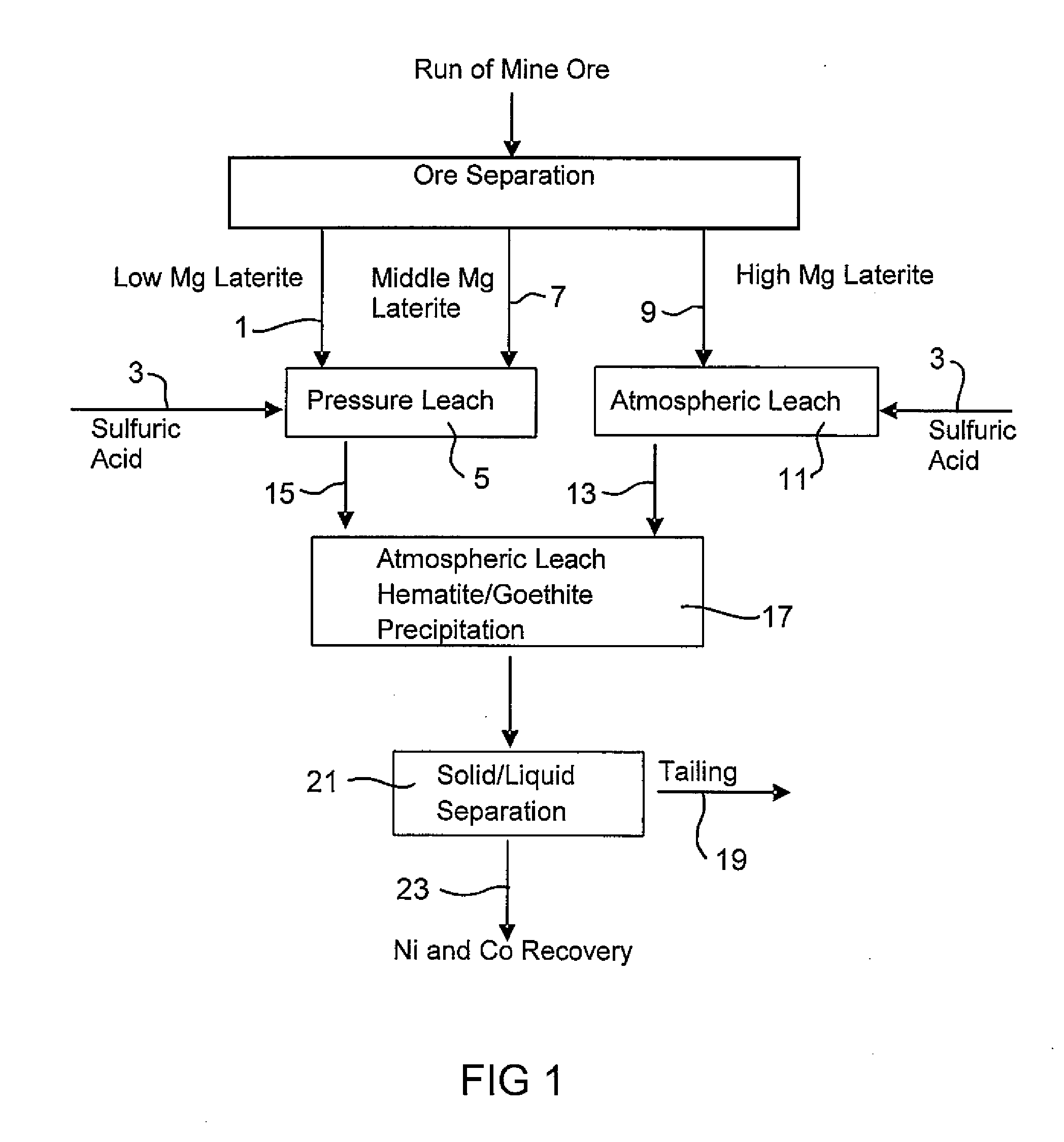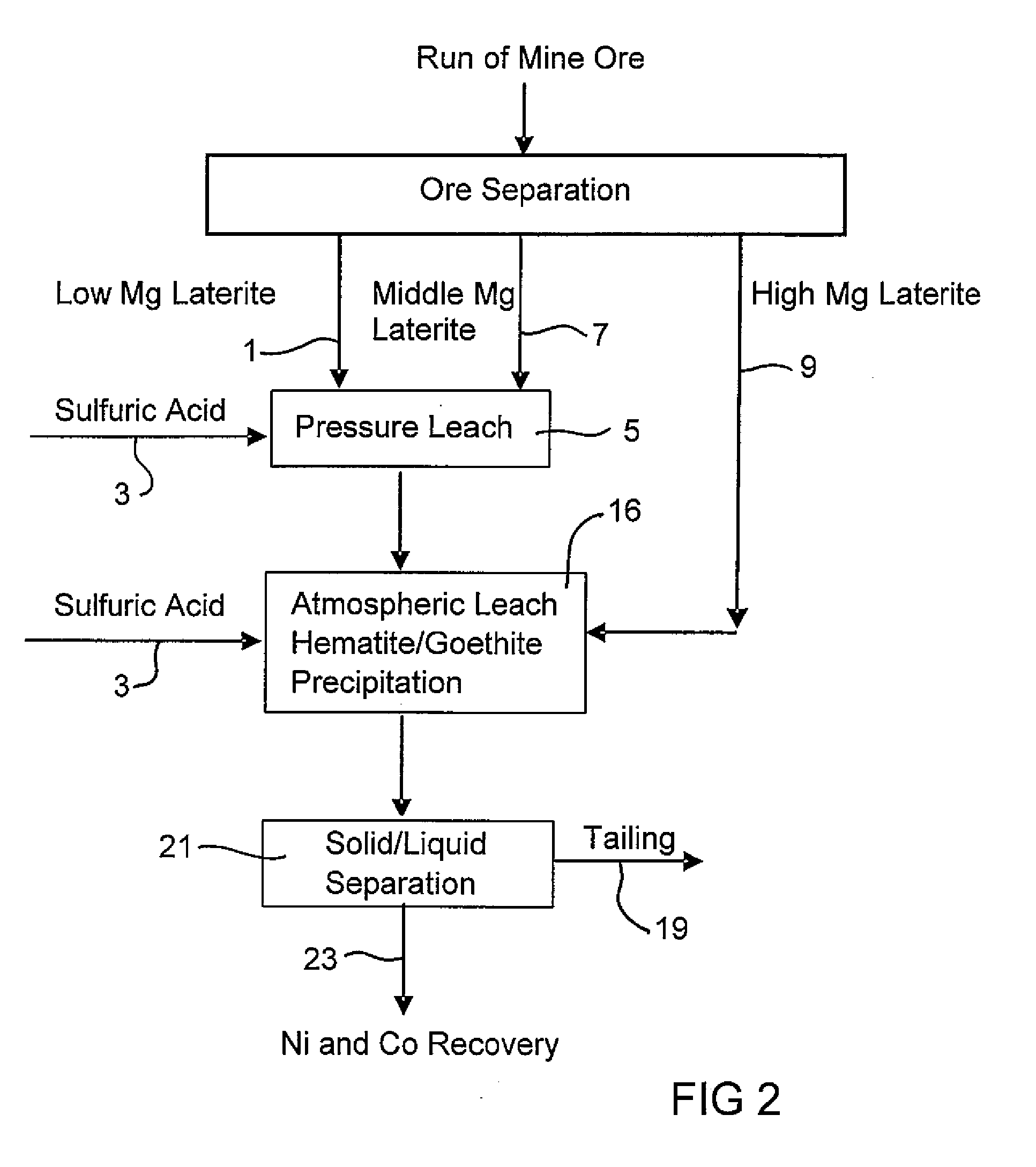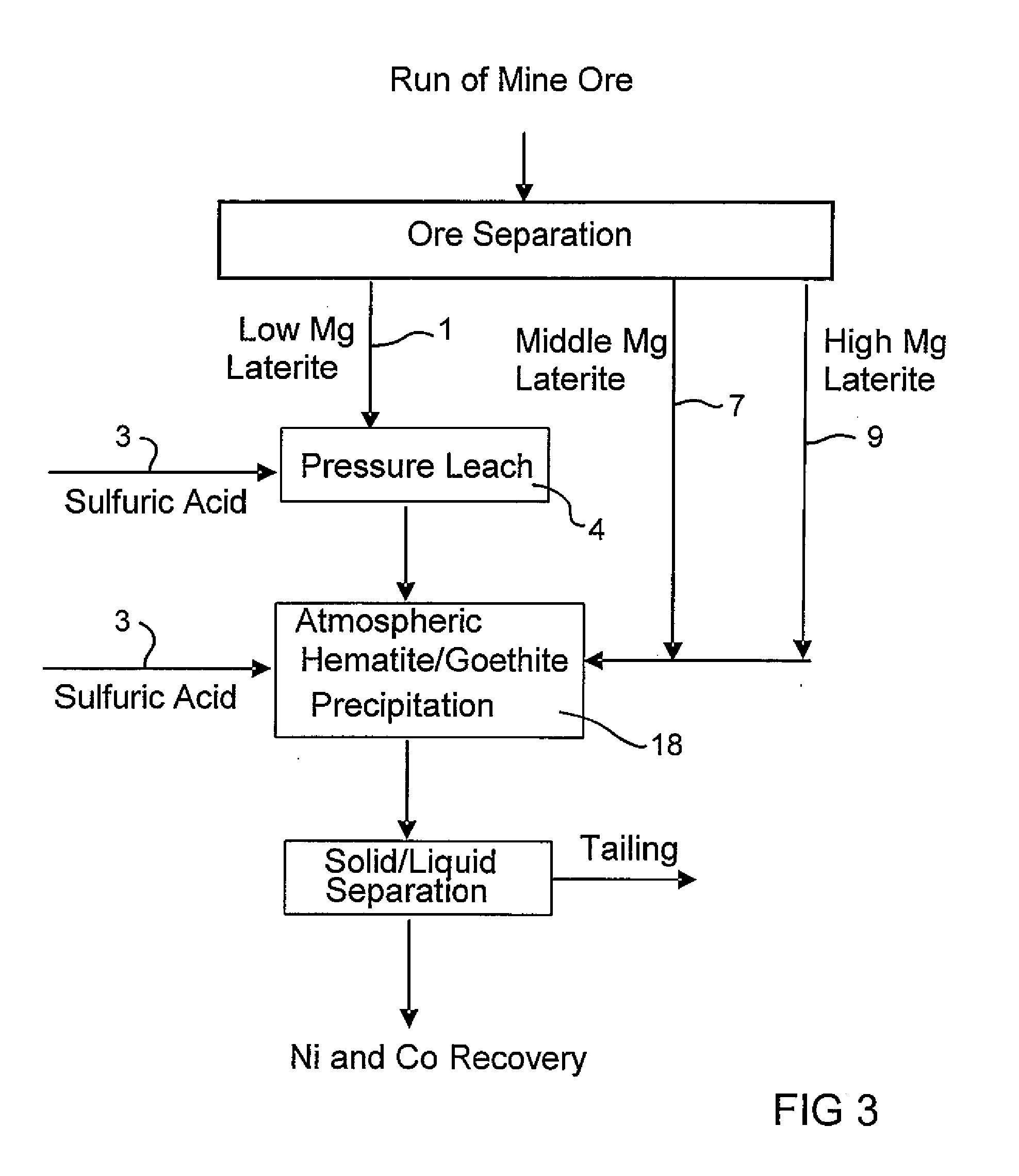Process for Enhanced Acid Leaching of Laterite Ores
a technology of acid leaching and laterite, which is applied in the field of leaching nickeliferous laterite ores, can solve the problems of high acid consumption, low nickel and cobalt recoveries, and high neutralisation temperatur
- Summary
- Abstract
- Description
- Claims
- Application Information
AI Technical Summary
Benefits of technology
Problems solved by technology
Method used
Image
Examples
example 1
Ore Processing, Chemical Assay and Mineralogy Investigation
[0052] Three limonite ore samples were agitated in tap water for two hours and screened at 1 mm. Any oversize material was milled in a rod mill with water which was low in Na, K, and NH4 ions to less than 1 mm. Two saprolite samples were milled in a rod mill with water which was low in Na, K, and NH4 ions to P80100<650 μm. The slurries of limonite and saprolite were adjusted to a solids concentration of 30% w / w and 25% w / w respectively. The SG and real PSD (particle size distribution) of the ores were measured with Malvern Instrument is shown in Table 1.
TABLE 1SG and PSD of Feed OreSGPSDFeed Oreg / mLP80 μmP50 μmP10 μmLimonite 13.3819.37.692.86Limonite 23.5220.78.633.14Limonite 33.7037.06.550.75Saprolite 12.7752.011.90.76Saprolite 23.3846.117.463.54
[0053] The chemical assay results of the ore samples are listed in Table 2.
TABLE 2Chemical Analysis Laterite SamplesAlCaCoCrCuFeMgMnNaNiPbSSiZnSample%%%%%%%%%%%%%%Limonite 11.8...
example 2
Consecutive Pressure Leach with Limonite 1 Containing 4.9% Mg and Atmospheric Leach with Saprolite 2
[0055] 914 g of 30.3% w / w Limonite 1 slurry (shown in Example 1) and 118 g 98% H2SO4 were added to a 2-litre titanium autoclave. The pressure leach in the agitated autoclave lasted one hour (excluding heat up time) at 250° C. and 48 bar. Simultaneously, 1101 g 25.2% w / w Saprolite 2 slurry (shown in Example 1) and 159 g 98% H2SO4 were combined in a 3-litre agitated glass reactor and leached for 30 minutes at 95°-104° C. and atmospheric pressure. The saprolite was heated to 60° C. prior to the addition of the acid. The final solution acidity of both the pressure leach with limonite and the atmospheric leach with saprolite were 38.3 g / L and 15.7 g / L respectively. The pressure leach slurry was transferred while still hot (˜90° C.) into the glass reactor and mixed with saprolite leach slurry to continue the atmospheric leach and iron precipitation at a temperature of 95°-104° C. for a fur...
example 3
Consecutive Pressure Leach with Limonite2 Containing 2.7% Mg and Atmospheric Leach with Saprolite2
[0057] 914 g of 30.5% w / w Limonite 2 slurry (shown in Example 1) and 104 g 98% H2SO4 were combined in a 2-litre agitated titanium autoclave. The pressure leach in the autoclave lasted one hour (excluding heat up time) at 250° C. and 48 bar. Simultaneously, 1101 g 25.2% w / w Saprolite 2 slurry (shown in Example 1) and 181 g 98% H2SO4 were combined in a 3-litre agitated glass reactor and leached for 30 minutes at 95°-104° C. and atmospheric pressure. The saprolite was heated to 60° C. prior to the addition of the acid. The final solution acidity of both the pressure leach with limonite and atmospheric leach with saprolite were 46.1 g / L and 22.6 g / L respectively. The pressure leach slurry was transferred whilst hot (˜90° C.) into the glass reactor and mixed with the saprolite leach slurry to continue the atmospheric leach and iron precipitation at a temperature of 95°-104° C. for a further...
PUM
| Property | Measurement | Unit |
|---|---|---|
| Temperature | aaaaa | aaaaa |
| Temperature | aaaaa | aaaaa |
| Fraction | aaaaa | aaaaa |
Abstract
Description
Claims
Application Information
 Login to View More
Login to View More - R&D
- Intellectual Property
- Life Sciences
- Materials
- Tech Scout
- Unparalleled Data Quality
- Higher Quality Content
- 60% Fewer Hallucinations
Browse by: Latest US Patents, China's latest patents, Technical Efficacy Thesaurus, Application Domain, Technology Topic, Popular Technical Reports.
© 2025 PatSnap. All rights reserved.Legal|Privacy policy|Modern Slavery Act Transparency Statement|Sitemap|About US| Contact US: help@patsnap.com



